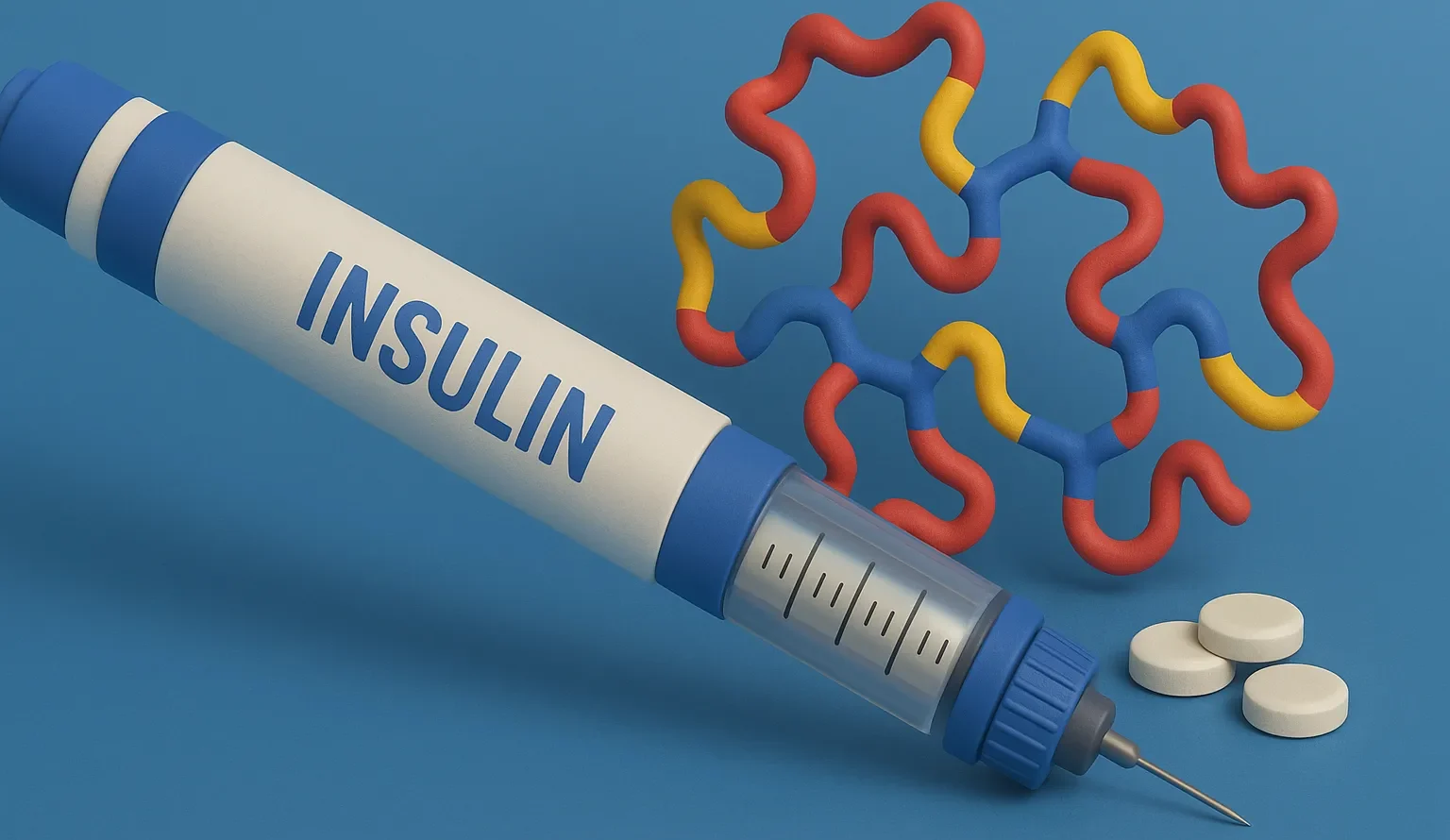Insulin is a hormone that regulates blood sugar by enabling glucose uptake into cells, used in diabetes management.
Introduction:
- It is a peptide hormone produced by beta cells in the pancreas.
- It regulates blood glucose levels by facilitating glucose uptake into cells (liver, fat, and muscle tissues) and aids in the metabolism of carbohydrates, fats, and proteins.
- In diabetes, impaired insulin production or function necessitates external administration.
Types of Insulin

- Rapid-Acting (Onset: ~15 min, Peak: 1-2 hrs, Duration: 3-5 hrs)
- Examples: Lispro, Aspart, Glulisine
- Uses: Mealtime glucose control.
- Short-Acting (Onset: ~30 min, Peak: 2-3 hrs, Duration: 5-8 hrs)
- Examples: Regular Insulin (Humulin R, Novolin R)
- Uses: Pre-meal and basal needs.
- Intermediate-Acting (Onset: ~2-4 hrs, Peak: 4-12 hrs, Duration: 12-18 hrs)
- Examples: NPH Insulin (Humulin N, Novolin N)
- Uses: Basal coverage.
- Long-Acting (Onset: ~1-2 hrs, Peak: Minimal, Duration: ~24 hrs)
- Examples: Glargine, Detemir, Degludec
- Uses: Basal insulin, once/twice daily.
- Ultra-Long-Acting (Onset: ~30-90 min, Peak: None, Duration: >24 hrs)
- Examples: Degludec
- Uses: Extended basal needs.
Mechanism of Action
Insulin lowers blood glucose by:
- Facilitating Glucose Uptake: Promotes entry of glucose into muscle and fat cells.
- Inhibiting Gluconeogenesis: Reduces glucose production in the liver.
- Promoting Glycogen Synthesis: Enhances storage of glucose as glycogen in the liver and muscles.
- Stimulating Lipogenesis: Encourages fat storage and inhibits lipolysis.
Uses
- Type I Diabetes Mellitus: Essential for survival due to absolute insulin deficiency.
- Type II Diabetes Mellitus: Used when oral antidiabetics are insufficient to control blood glucose levels.
- Gestational Diabetes: Manages elevated blood sugar levels during pregnancy.
- Hyperkalemia: Insulin shifts potassium into cells, lowering blood potassium levels.
Side Effects
- Hypoglycemia: Low blood sugar levels, presenting as dizziness, sweating, confusion, and in severe cases, loss of consciousness.
- Weight Gain: Increased fat storage due to insulin’s anabolic effects.
- Injection Site Reactions: Redness, swelling, or itching at the injection site.
- Allergic Reactions: Rare but may include rash or anaphylaxis.
- Lipodystrophy: Changes in fat tissue at injection sites from repeated use.
Click Here to Watch the Best Pharma Videos

